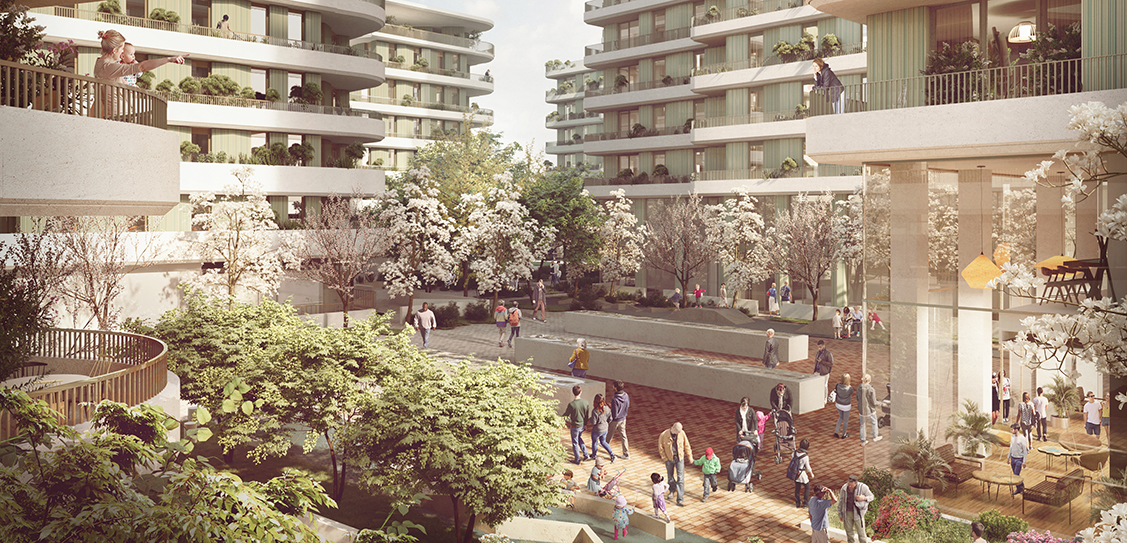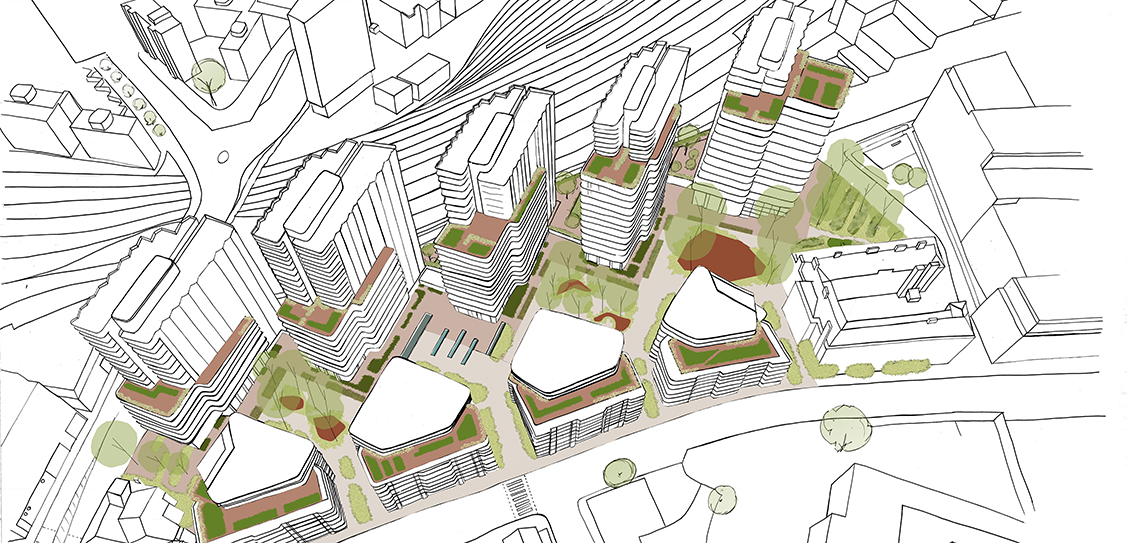As shopping recommences, sports restart behind closed doors and friends and family meet outside at a distance, our public lives are beginning to reopen, exiting a global lockdown that, at its height, included 100 countries and over half of the global population.
Since then, the importance of public spaces for communities coming back together has become clear. However, this gradual return to normality brings new challenges, observation of social distancing chief among them. As a result, our public realm must adapt, reimagining our cities to provide more people-centric spaces, safer channels of movement and greater flexibility, whilst prioritising sustainability. Then our public spaces will be fit for the post-COVID-19 world.
People-centric adaptations
As lockdowns have slowly started to lift, it’s become clear just how important the public realm is to our communities, from our local town square and nearby parks to other green public spaces. The newfound significance of these areas has prompted a trend towards new, people-centric spaces – a trend that is being felt globally.
The reopening of the Place de la République, for example, highlights the importance of open spaces for public gatherings, while closures of road networks for pedestrian-only access, from Auckland, New Zealand to Denver, USA, indicates the people themselves are demanding more from the public realm. In Lebanon, new play spaces are being made available to Syrian refugees, ensuring that outside space is available for as much of the community as possible.
This shift has highlighted the enormous importance for urban planners and architects to design public realm spaces with people at the centre. At astudio, a recognition of the significance of outdoor spaces in our lives, during lockdown, has prompted us to expand our expertise and focus on a post-COVID-19 public realm with a new landscape design division.
Designing with an environmental conscience
COVID-19 has also shone a light on potential health risks of high-density spaces, from offices to high streets. But cities and towns depend on density, so the design skill is how to deliver the density required for cities to thrive and be viable, together with balancing the growing needs that the public realm and outside space play in our lives.
The need to accommodate an ever-growing population has in some places left little room for green space, with just 26% of London’s 800km2 of green space publicly accessible. Yet, with 63% of people agreeing that it is more important to be active now than before the pandemic, the need to prioritise greener city design is clear, providing an opportunity to increase urban greening and establish greater biodiversity across our built environment. Beyond enabling a greater ease of social distancing in the immediate term, this brings significant long-term benefits, increasing carbon capture and mental wellbeing.
At the height of the pandemic, for example, Milan announced its Strade Aperte, or “Open Roads” project, centred on creating green transport access, alongside a comprehensive review of access to green space in the city. Both projects will play a crucial role in enabling pedestrianisation and minimising CO2 emissions. In areas that lack available space, solutions could include reclaiming disused land areas or introducing rooftop gardens with split-level solutions that maximise capacity.
Navigating the city and maximising safety
As people begin to travel around their towns and cities again, careful attention must also be paid to facilitating safe movement. Narrow historic streets and entryways to public transport, for example, are prime sites for crowding and must either be made wider, better dispersed and more frequent to cater to social distancing guidelines for the foreseeable future and beyond.
Of course, widening streets or dispersing crowded buildings would be a near impossible ask of our towns and cities, but there are solutions to help get communities moving around safely. Shared surface design, for example, which creates a hierarchy of structured movement corridors for pedestrians, bikes and vehicles, can offer a viable way of managing street use and encouraging greener travel.
Moreover, in the immediate term app technology can be used to generate heat maps of streets, density of use and inform safe and accessible movement corridors across the city. We are already seeing major change in this area with the pedestrianisation of key parts of Aberdeen, and London’s plans to temporarily pedestrianise Soho, alongside the many pavement widening schemes already completed.
Flexibility for safety
As communities recover from the impact of the pandemic, flexibility will also be key to survival. Community facilities will need to easily flex up or down their space needs to accommodate social distancing, catering to growing numbers of visitors or customers safely. The ability to quickly adapt to changing government guidelines, particularly in the event of a second wave or renewed lockdown measures, will also be critical, but this may mean expanding space that shops, restaurants or other community sites may not have, using streets and open spaces in new ways to solve this problem. Borrowing the European wide boulevards design in the UK can allow for this expansion.
We have seen with the miraculous speed of construction of the Nightingale Hospitals that offsite construction presents a rapid and cost-effective solution to expansion. Enabling facilities to scale up or adapt their space to accommodate social distancing with high-quality, temporary spaces. Offsite built Modular buildings, already a widely accepted solution to addressing high demand for affordable housing, offer a viable, flexible solution for community facilities, such as restaurants and cafes that sorely need customers to return.
After a prolonged period of time away from our family and friends during lockdown, the importance of spaces that bring us back together for the benefit of our wellbeing cannot be overstated. However, whilst it is imperative that any changes to our cities to meet new post-pandemic demands are made with safety in mind, it is also a vital opportunity to enhance environmental and social sustainability through intelligent redesign. With a greater focus on people-centric spaces, de-densified green areas, pedestrianisation and more flexible communal spaces, we can create a public realm fit for the post-COVID-19 world.

.jpg)

